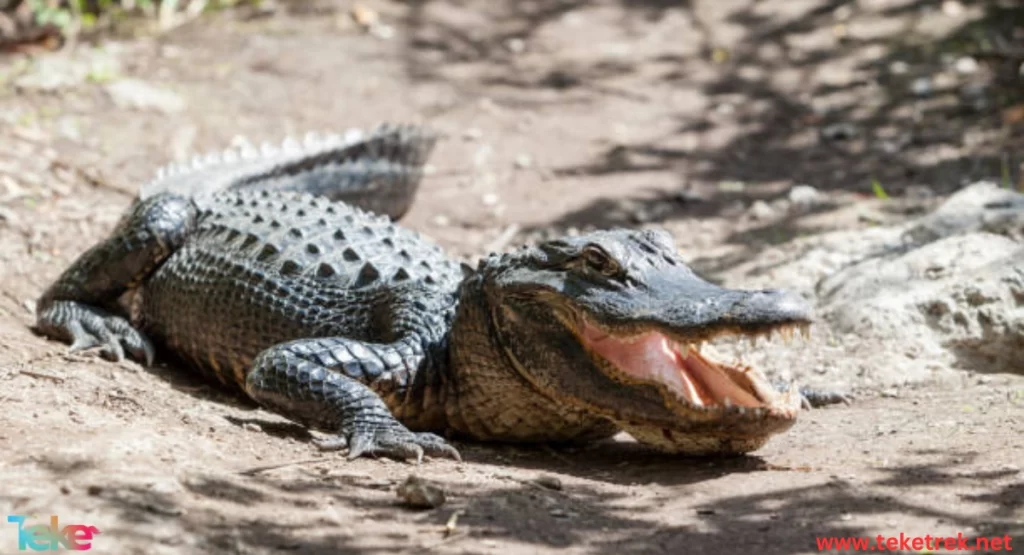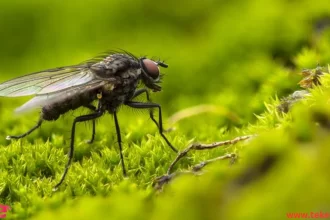The American alligator is considered one of the largest reptiles in the Western Hemisphere and was declared endangered in the 1960s.
Let’s learn more about it from teketrek.
Facts about The American Alligator
Its scientific name is Alligator mississippiensis.
Belonging to the Crocodylia order, division of Vertebrates, Alligatoridae family, the American alligator inhabits swamps and rivers.
It closely resembles crocodiles, but one distinguishing feature is that its front and lower teeth are nestled inside sockets in the upper jaw, unlike crocodiles whose teeth are visible when their mouths are closed.
The American alligator has very weak muscles responsible only for opening its jaws.
It regularly basks in the sun to raise body temperature, warm its blood, and increase activity.
It can hunt in water.
It can easily climb trees and fences.
It is known that the American alligator will attack humans if they feel threatened, especially if humans encroach on their territory.
Hunting in the late 20th century led to the complete eradication of all American alligator populations.
Fortunately, the seriousness of the situation was realized in the United States before it was too late. Species protection has led to an increase in populations now.
The American alligator is considered a solitary and predatory animal that moves slowly on land.
The American alligator moves by crawling or sliding along the banks.
The American alligator is considered a territorial animal.
It produces various sounds to represent different things.
Male American alligators make very few noises outside the breeding season. They are known to bellow and roar to deter competing males.

The American Alligator Specification
Body: has a massive body with extremely powerful legs that grant it the ability to attack prey aggressively.
Weigh: Females of the American alligator weigh around 90 kg, while males weigh about 400 kg.
The length: The length of an American alligator is approximately four meters from head to tail.
Skin:The American alligator’s skin is olive green in color, except for its belly and lower part, which are lighter.
Jaw: It has a U-shaped jaw with teeth visible only in the upper jaw.
The Toes: The American alligator has webbed toes with smooth skin, connected by a thin layer of skin between them.
https://teketrek.net/internal-and-external-parasites-in-cats/
American alligator habitat
The American alligator can be found in the Mississippi River delta, in the state of California, and in Florida.
The American alligator prefers living in relaxed areas and sunny regions.
It is found in the southeastern corner of Oklahoma and the southern tip of Arkansas. It also inhabits Louisiana.
American alligator diet
Despite having large jaws, the American alligator’s diet is relatively small. It prefers shells, some fish, and small rodents.
The American alligator feeds on some birds. It can also attack other reptiles and crocodiles.
https://teketrek.net/aging-diseases-in-cats/
Reproduction stages of the American alligator
The mating season for the American alligator begins when temperatures rise, typically in spring or summer.
Males and females’ mate, producing around 30 eggs. After two months, the eggs hatch, and the young alligators emerge.
The young American alligators stay protected by their mothers for about half a year to ensure their food and protect them from predators.
After some time, the young migrate from the nests and do not return once they reach maturity.

FAQs about the American alligator
What is the relationship between the American alligator and humans?
The American alligator does not immediately consider humans as prey but will continue to attack in self-defense.
How long does the American alligator live?
The American alligator can live for 30 to 60 years.
What is a baby American alligator called?
It is called a hatchling.
What is the threat affecting the American alligator?
The biggest threat affecting the American alligator is water pollution.
How fast can the American alligator travel?
The American alligator can travel at speeds up to 15 miles per hour.
In conclusion, we must note the importance of this animal in achieving ecological balance. Hunting at the end of the last century caused the extinction of the American alligator population. Fortunately, the seriousness of the situation in the United States of America was realized before it was too late. Consequently, this matter led to an increase in the population numbers at the present time.
References:





